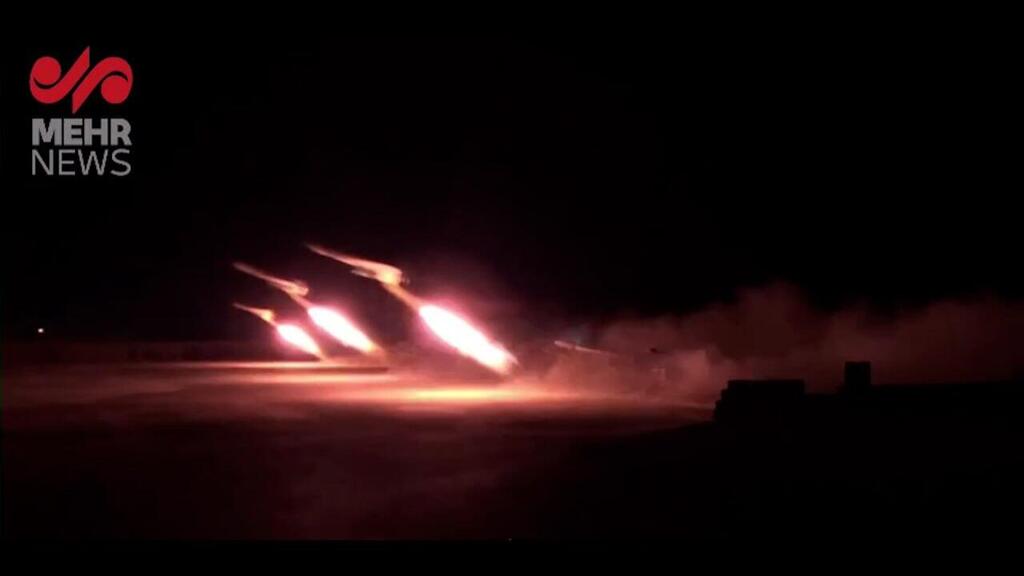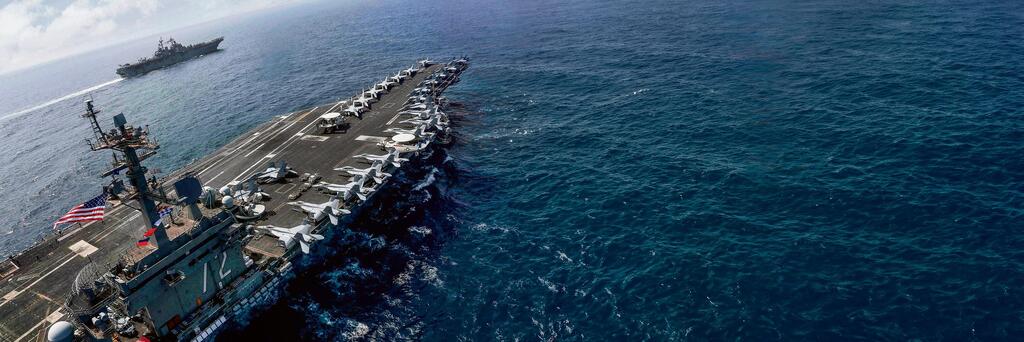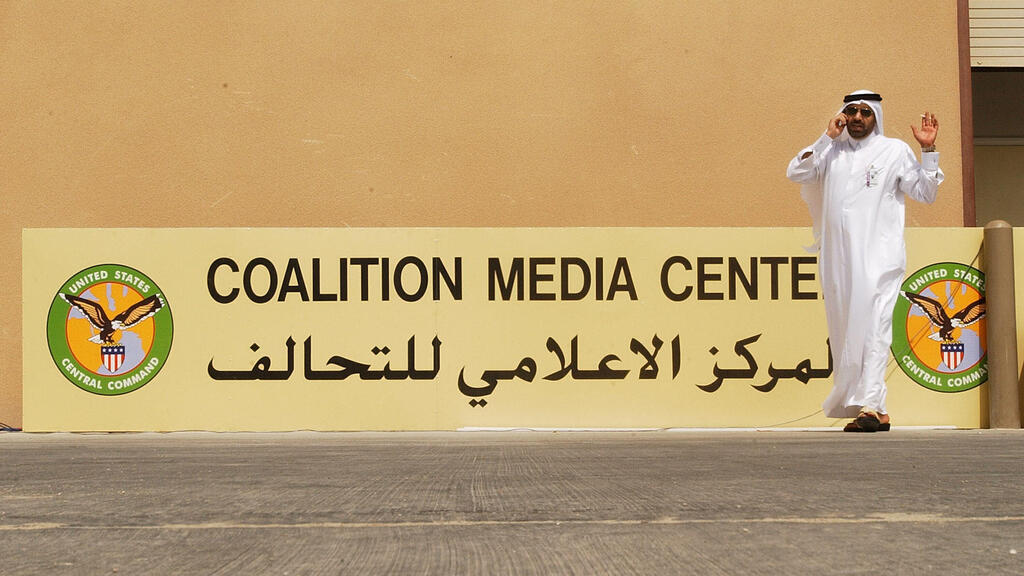Getting your Trinity Audio player ready...
Almost four years after signing, Israel is now reaping one of the Abraham Accords most important fruits: the transference of its area responsibility from U.S. European Command (EUCOM) to U.S. Central Command (CENTCOM). As soon as the order was issued by the Pentagon, the IDF became an active partner in the pro-Western military coalition in the Middle East. Despite not being formal, this alliance holds operational implications exceeding those of NATO, of which North American and European countries are members.
For Israel, the operational implication is the ability to benefit from intelligence and other military factors deployed by the Americans, in cooperation with Sunni Arab countries across the Middle East. We witnessed the first result on the night of April 13-14, as Iran and its proxies tried to attack Israel with missile and UAV barrages – and failed miserably. This can be attributed to the pro-American coalition that, under the instruction of (four-star) General Michael Corella, acted determinedly and efficiently as a unified and well-trained blow.
A further implication of this move is that Israel and the United States can maintain their relations via two separate diplomatic channels: the civil-political channel between the Jerusalem and Washington administrations, replete with disagreements and crises, at least with President Joe Biden’s current Democratic administration and; the “diplomatic-military” channel where unanimity, cooperation devoid of egos and political interests prevail along with remarkable military professionalism.
This channel, run by Secretary of Defense Lloyd Austin and Defense Minister Yoav Gallant on the political level, and Chief of Staff Herzi Halevi and General Michael Kurilla at the operational level, allows for circumventing the problems arising from the murky relations between Netanyahu’s fully right-wing government and the liberal administration headed Biden and Vice President Kamala Harris.
This was demonstrated in recent days with the acceleration of arms shipment from the United States. “Almost all the obstacles but one have been overcome,” says an Israeli official familiar with Israel-US military cooperation.
7 View gallery
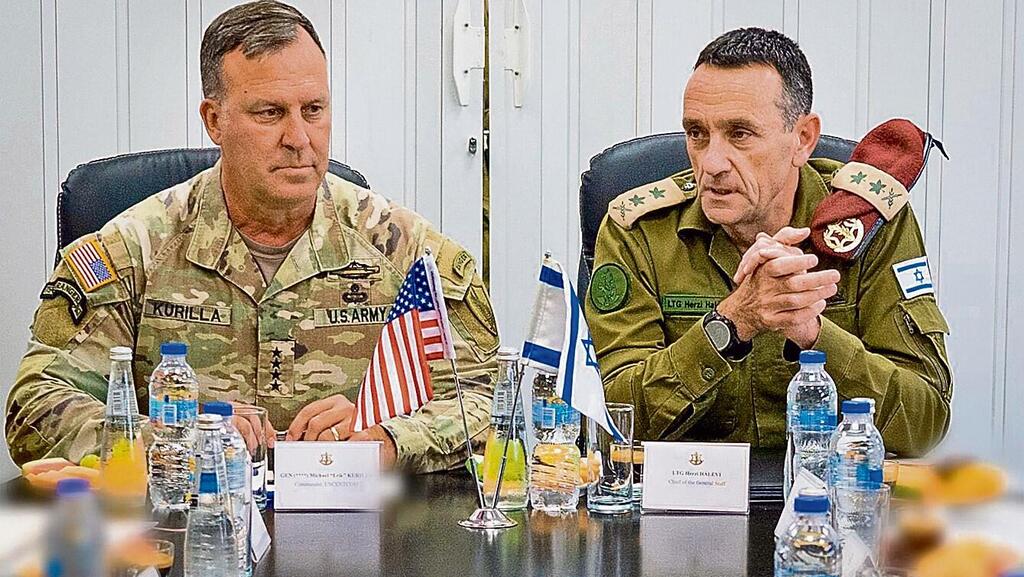

CENTCOM commander General Michael Kurilla with Chief of Military Staff Herzi Halevi
(Photo: IDF)
Other sources say that the obstacle not overcome is that of precision one-ton GPS guided bombs that the US has not agreed to transfer to Israel, either for fear of IDF using them in the proximity of Gaza’s civilian population, or in retaliation to Netanyahu’s video a few months back, accusing of the US not transferring to Israel sufficient military supplies. But the rest of the shipments, including spare parts, have been approved, and permission to purchase 50 latest model F15 jets has been approved.
So, for over a week now, two huge C17 or Boeng 747 carrier jets loaded with equipment and armaments Israel requested, have been landing daily at the Nevatim air base. Secretary of Defense Austin, a retired general who himself commanded CENTCOM, told Defense Minister Yoav Gallant that this will carry on as long as Israel avoids actions likely to set off a regional war.
If you’re wondering about the meaning of this rather odd arrangement of unprecedented military cooperation alongside ongoing disagreements between the administrations, take a look at CENTCOM’s official mission statement as laid out by the Pentagon:
“UCENTCOM directs and enables military operations and activities with allies and partners to increase regional security and stability in support of enduring U.S. interests.” The Pentagon then goes on to detail its command priorities:
1. Deter Iran
2. Counter Violent Extremist Organizations
3. Compete Strategically
- Regional Constructs
- Integrated Air and Missile Defense/ Counter Unmanned Aerial Systems (less diplomatically put, building a military coalition part of the global struggle between the liberal democratic bloc headed by the US and Europe, against the totalitarian bloc led by Russia, China, Iran and North Korea).
The IDF could have adopted this mission statement and its priorities with minor amendments. So, amid the almost symbiotic CENTCOM-IDF relationship, it’s easy to understand why these civil and diplomatic channels can exist alongside one another without affecting each other.
Relations with CENTCOM let Israel in through the back door to be able to cooperate with countries with which we have no diplomatic relations. For security reasons, most of this cannot be made public, but it’s no secret that top Saudi, Kuwaiti and Israeli army officers sit alongside representatives from other armies at CENTCOM’s headquarters in Florida. Everyone takes part in discussions with everyone and they have teams enabling intelligence exchange and operational coordination, sometimes at intervals of just minutes. And all this is as the US is still trying to tempt Israel into a ceasefire and agree to a hostage deal by promising normalization with Saudi Arabia.
It hasn’t always been this way. Until January 2021, Israel fell under the European Command’s (EUCOM) area of responsibility. One reason for this was believing that if Israel were in trouble, it would be the Sixth Fleet, based in Italy under the European Command, that would come to the rescue. The main reason, however, was the US’s fear that the Arab states wouldn’t agree to cooperate with it in a military coalition under CENTCOM if Israel was in its area of responsibility.
Those days are gone. Things are completely different now.
Founded in 1983 under President Ronald Raegan following the Islamic revolution in Iran and the Soviet invasion of Afghanistan, CENTCOM is one of seven regional commands under the US president (Commander-in-Chief) via the Pentagon and the secretary of defense. They cover the entire world with each area of responsibility defined and delineated geographically. Alongside regional commands, (Northern, Central, European, Indo-Pacific, Southern, Africa and Space Commands), there are also four functional commands: Special Operations, Transportation, Strategic and Cyber Commands.
CENTCOM’s area of responsibility stretches across over 4 million square miles (10 million square km) and a population of over 560 million of all religions and national identities. Operating under CENTCOM command are the Ninth Air Force, the Fifth Fleet as well as marine and ground forces. With the exception of the Fifth Fleet whose headquarters are in Bahrain, the forces’ permanent bases are located in the US and are deployed in accordance to needs of the Command’s various activity locations. Alongside forces under its direct command, CENTCOM can, by Pentagon orders, receive assistance and reinforcements from other commands.
CENTCOM’s main command center is at the MacDill Air Force Base in Tampa, Florida and its forward headquarters are at Al Udeid Air Base in Qatar.
Oh, and almost all UAV activity in the CENTCOM’s area of responsibility is operated from US soil. The vehicles themselves, reconnaissance and spy drones or the armed drones that assassinated Al Qaeda and ISIS operatives took off from bases in the Middle East, but the operations themselves were managed from air-conditioned rooms at the Florida headquarters.
At present, 2,500 troops, CIA operatives and other administration organization personnel along with civilian consultants including private security company personnel, are deployed in Iraq. A further 900 are scattered across smaller bases in northern and eastern Syria. Thousands more are located in Jordan, Bahrain, Qatar, Saudi Arabia and Israel.
7 View gallery
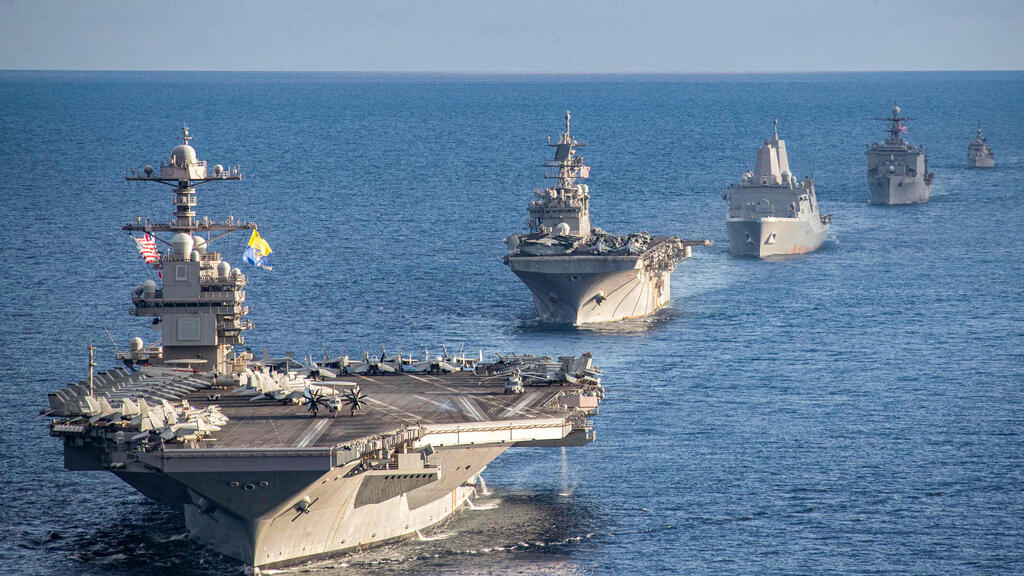

USS Gerald Ford carrier fleet
(צילום: Maxwell Orlosky / US DEPARTMENT OF DEFENSE / AFP)
In addition to the forward command in Qatar and the Fifth Fleet in Bahrain, CENTCOM has commands at dedicated bases inside an IAF base. This recently completed complex is designed to house and manage joint Israel-US defense operations and intercepting missiles and UAVs. CENTCOMs ground forces, (Third Infantry Division) commander, Lt. Gen. Patrick Franck is presently at this command. He arrived as part of (failed) efforts to set up a pier for unloading humanitarian aid in Gaza and stayed on to manage CENTCOMs local headquarters in Israel. Pentagon protocol dictates CENTCOM commanders alternate between Marines and US army generals. Secretary of Defense Lloyd Austin’s predecessor, James Mattis who came from the Marines also served as CENTCOM commander. Austin, the currently serving secretary of defense, is from the army.
Deputy Chief of Staff Maj. Gen Amir Baram is the man responsible for the IDF’s day-to-day communications with CENTCOM, but personal contact is maintained between Chief of Staff Lt. Gen. Herzi Halevi and General Kurilla. Fighting literally side by side repelling Iran’s April UAV attack, and preparing for it, forged an unprecedented personal and professional relationship between the two. These contacts contributed to the creation of new strategic situation that didn’t exist before October 7.
Three further General Staff generals are in daily and immediate contact via secure phone lines with their CENTCOM counterparts and top commanders in armies in the region; head of the Operations Directorate Oded Basyuk; IAF chief Tomer Bar and; Navy Commander David Saar Salama.
Conversations between IDF and CENTCOM top brass deal with division of labor and planning and logistic preparations in coordinating operations, but they also include an important component of avoiding and preventing confrontations. The Americans also consult the IDF on operations in which they’re not directly involved. The IDF doesn’t always take this advice, but they listen to the tone in which the Americans convey their messages. It’s hard to say for sure whether there’s some kind of hierarchical relationship between CENTCOM and IDF commanders.
If there is, it’s informal, but it can be categorically said that it’s the Americans who lead and determine sector boundaries and division of labor in all that concerns the second and third circles beyond Israel's borders, such as in Iraq, Yemen, eastern Syria and Jordan, with IDF commanders in charge of defense in areas dozens of km from and inside the State of Israel itself.
This division was decided at the beginning of the war when the Americans stationed destroyers, rockets and interception missiles in the Red Sea across from Yemen and the Gulf of Oman opposite Iran and put combat squadrons on standby at various bases across the Middle East that, for fear of a diplomatic incident, both the Americans and the IDF are careful not to name. The goal is a geographic division of labor in detecting and intercepting anything flying in the air toward us or at ships afloat the Mediterranean.
7 View gallery
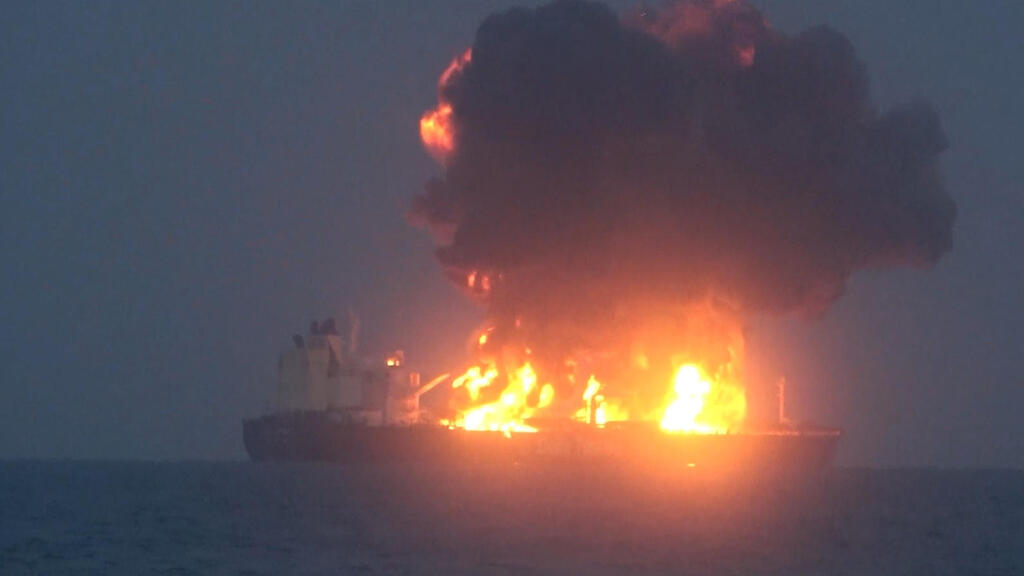

Greek oil tanker on fire after a Houthi attack in the Red Sea on Wednesday
( Photo: EPA)
The division of labor between us and that of the American, British and French fleets and warplanes is decided in accordance with operational circumstances and is based on Israel’s long-range capabilities: the Arrow 3 that can intercept missiles from Iran outside the atmosphere and; the Arrow 3 with its range of hundreds of miles beyond Israeli territory.
In the current situation of both Iran threatening retaliation against Israel, and renewed efforts for a hostage deal and to end the war, led vigorously and aggressively by the United States, Israel-US strategic cooperation is based on five components:
Firstly, the clear American message to the Iranians – Don’t disrupt stability in the Middle East and don’t harm Israel in such a way that would force it to strike you back with one epic blow, likely setting off a regional war. The American’s aren’t sufficing with just talk. Alongside the messages conveyed to the Iranians via all possible diplomatic channels, the US has stationed forces on an unprecedented scale in the Middle East and, unlike last time around, it’s clearly offensive in nature.
The Americans have made it clear to Iran that if they attack Israel, they’ll likely be subject to military blows not just from Israel, but from the US too, alongside imposition of sanctions. This means the cost of loss to the Iranians would be very high, both economically and militarily. The Americans are implementing President Theodore Roosevelt’s "Speak softly and carry a big stick; you will go far" doctrine.
The second component is American operational deployment in Israel’s defense. It starts with a system of early warning sensors for a possible attack on Israel by Iran and Hezbollah. This system is designed to quickly identify and decipher any threat, be it ballistic missiles, cruise missiles or attack UAVs. This arrangement compliments the naval and air systems, unprecedented in their scope, already in the region or on their way. It’s made up of the following forces:
• The USS Theodore Roosevelt aircraft carrier task force, sailing in the Gulf of Oman adjacent the Strait of Hormuz that includes a monstrous vessel with dozens of fighter jets on deck, as well as three missile destroyers (USS Michael Murphy, USS Russel and USS Daniel Inouye).
• Two missile destroyers in the Red Sea designed for missile interception (USS Cole, and USS Laboon)
• Missile destroyer USS John S. McCain afloat in the Persian Gulf.
• A Sixth Fleet missile destroyer (USS Bulkeley) in the eastern Mediterranean equipped with Aegis and SM3 missiles designed to assist Israel intercept ballistic missiles launched from Iran.
• USS Georgia, a missile guided submarine in the eastern Mediterranean. During the Cold War, she was equipped with ballistic nuclear missiles for deterrence purposes and currently carries 174 of the latest cruise missiles with a 1,600 km range capable of hitting large numbers of sensitive and strategic targets inside Iran with precision, vastly damaging Iran’s nuclear and gas industries.
• The USS Abraham Lincoln task force on its way from the Indian Ocean to the Persian Gulf, expected to arrive within days. The F35C stealth fighters deployed on USS Abraham Lincoln aren’t waiting on the ship, but are rather ready for action on bases in the region ahead of operations. intercepting UAVs or attacks from Iran and its proxies.
• In addition to all this, an amphibious task force (ATF) has made its way to Cyprus, equipped with three landing ships, a mini helicopter carrier and Marines fighter jets that take off and land vertically. Their job is evacuating American citizens in case of an all-out regional war. To this end, a few thousand marines are stationed on them to secure the evacuation zone if necessary.
The very composition of this force constitutes a clear threat to Iran. The message is clear: If an all-out war breaks out following an Iranian attack on Israel, the US won’t be content with defending its allies, but will also attack Iran and its proxies alongside Israel.
This system’s main pillar, known in Israel as the Sky Defense Chain, deployed from Israel to Iran, is a system of detection means including Israeli and American satellites, permanent ground installations deployed, among other places, in the Gulf states, Egypt and, obviously, in Israel. It is made up of warning and control facilities and F35 jets capable not only of interception, but also serving as airborne intelligence installations with various sensors capable as operating detection and warning systems for CENTCOM.
This strategic system’s third component is the ongoing communication CENTCOM maintains with all countries in the region. This communication allows for cooperation between countries that do not have official dialogue or official relations, such as Israel and several Arab states.
Intelligence that Israel gathers is passed on to CENTCOM that decides to whom to pass on further, why and how. One may assume that this communication, which is formally indirect and managed by the Americans, ultimately leads to informal dialogue channels that constitute the core of military diplomacy at the present time. The repelling of the April 14 Iranian attack clearly attests to this dialogue’s effectiveness.
This communication also proved itself in Israel’s July 20 attack on Hodeida Port in Yemen. Although the American’s did not take part in this attack or its planning, Israel gave CENTCOM an early warning to avert accidents or altercations between the friendly forces en route to and from target above Hodeida. Oh, and the Americans wouldn’t let the Saudis or Emiratis attack Yemen, but Israel did to convey a message of deterrence: If missiles fall here, fuel tanks will burn there.
7 View gallery
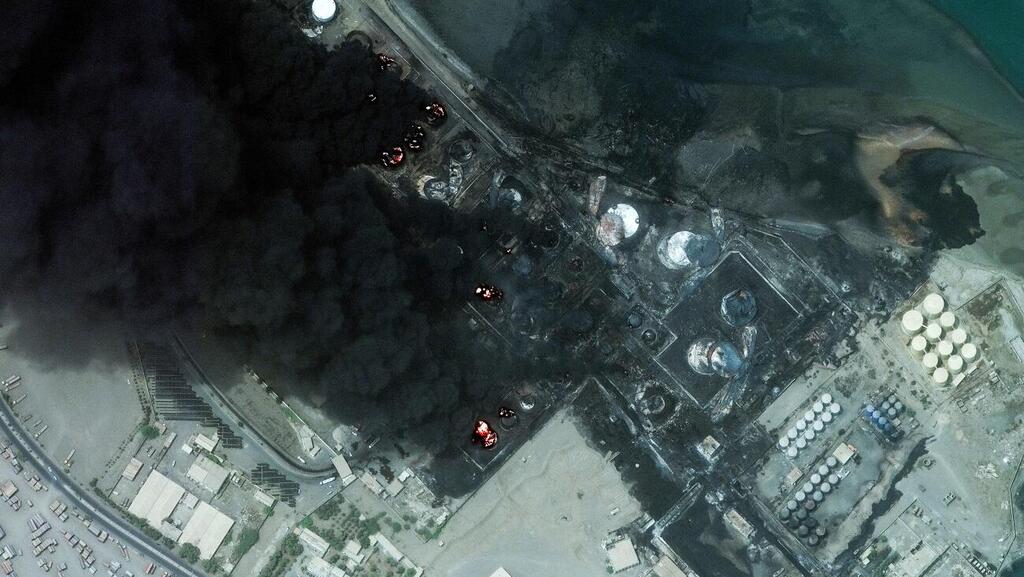

Yemen's Hodeidah port burns after Israel's strike in July
(Photo: Maxat Technologies, Reuters)
The fourth component is the collaborative planning between Israel and CENTCOM headquarters and other partners averting diplomatic incidents and creating excellent coordination and division of labor for the air, sea and ground forces operating within CENTCOM. The CENTCOM-led aerial coalition, prepared to repel an Iranian or Hezbollah attack on Israel, is also partner with the British air force (RAF) operating out of Akrotiri, Cyprus, the French air force and even one German refueling plane.
“The joint operational planning is similar to SMEAC (Situation, Mission, Execution, Administration and Logistics, and Command and Signal – orders given prior to a mission)” says a senior Israeli security official familiar with joint Israel-CENTCOM operational planning. “There’s a division of regional labor, division of tasks, detections and identification at tasks and identification at all ranges and connecting it all to give the whole picture. Then comes the interception element by either missiles of jets and transferring missions from one element to another during battle if necessary.”
The fifth element of the current collaboration with CENTCOM is the acceleration of shipments to Israel by carrier jets landing on ships at Nevatim airbase. Orders come from the Pentagon, but CENTCOM is responsible for the actual implementation. “There’s presently an order to release everything, and we conduct dialogue on a daily basis about everything that’s sent,” says an Israeli official with satisfaction, hastily adding, “But, you must understand. All this comes at a cost.”
Even if unspoken directly, it’s clear that in exchange for military preparation, threatening sanctions and the unexpected supply flow increase, the US demands Israel avoid a preemptive strike on Iran, and that if Iran and Hezbollah attack, Israel will suffice with proportional response, such that would not lead to a regional war, and would avoid the kind of disproportionate response Gallant is threatening. And the main thing is that Netanyahu should display flexibility and willingness to reach far-reaching compromises in negotiating a deal to release the hostage and attain a ceasefire.
 Ron Ben YishaiPhoto: Courtesy
Ron Ben YishaiPhoto: CourtesyThe US is actually telling Israel: We’ll give you everything you need in defense terms, but you will allow the war to end before the US elections. The Biden-Harris administration knows all too well that ending the war in the Middle East could very likely win Harris the election. And no less important, they don’t want American soldiers coming home in coffins - that could well happen if a regional war erupts.
The Biden administration also believes that the goodwill CENTCOM will garner in Israel’s security establishment – Defense Minister Yoav Gallant, Chief of Staff Herzi Halevi and intelligence chiefs - will help them install an alternative government in Gaza that would include the Palestinian Authority. This would also enable further countries in CENTCOM’s military coalition such as the UAE, to participate in the new administration in Gaza after the war.


